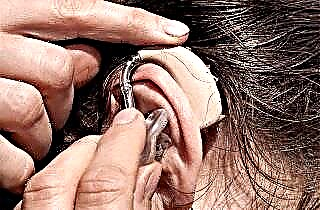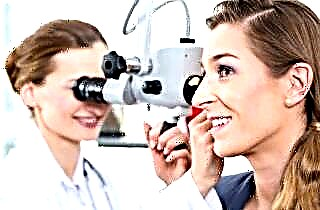Various sores in the ears of a person are not uncommon. The ears are quite a sensitive organ, which must be handled with care. The main causes of ear diseases are: infection, hypothermia, draft, prolonged exposure to air conditioning, irregular and improper care. At the initial stage, most ear diseases are fairly easy to treat. But when neglected, they can lead to serious complications.
Types of diseases
 There are many types of ear diseases, which, according to medical classification, are divided into the following main categories:
There are many types of ear diseases, which, according to medical classification, are divided into the following main categories:
- Otitis. The most common sore ears. Otitis media is an inflammatory process that usually occurs as a result of infection penetrating through the ear canal. It is dangerous because, if untreated, it goes into a purulent stage and can cause serious complications, including complete hearing loss or blood poisoning. The first signs of the disease: pain, tinnitus, a feeling of congestion, purulent discharge is possible, later - an increase in body temperature. At the initial stage, conservative treatment is possible. With purulent and complicated otitis media, the patient is placed in a hospital.
- Sulfur plug. With irregular ear care and hyperactivity of the sulfur glands, over time, sulfur accumulates in the ear canal and can even completely block it. The first symptom is a gradual decrease in hearing and a feeling of stuffiness in the ears. Gradually, the sulfur thickens and becomes dense. It seems to the patient that there is a foreign body in the ear. If the sulfur begins to press on the eardrum, there is pain, tinnitus, and possibly dizziness. After removing the sulfur plug, all symptoms disappear almost immediately.

- Sepsis. A serious complication caused by a prolonged lack of proper treatment for purulent otitis media. The infection enters the bloodstream and spreads through the veins of the patient, causing a general infection of the body. It manifests itself in a sharp increase in body temperature up to 380C (very rarely - a decrease to 360C), an increase in the heart rate of more than 90 beats per minute, heavy, rapid breathing. A blood test reveals an increased content of leukocytes. At a later stage, multiple purulent eruptions may appear. Requires immediate medical treatment, since in severe cases septic shock occurs, which can lead to the death of the patient.
 Neuritis. Inflammation of the auditory nerve, accompanied by severe pain, which can be caused by multiple causes. Most often, neuritis occurs as a complication after an infectious disease: flu, measles, mumps, etc. Sometimes it is a consequence of acute intoxication of the body with chemicals, large doses of nicotine and alcohol, and potent drugs. Rarely manifests itself as one of the consequences of noise, vibration or barotrauma. If untreated, it can cause severe chronic hearing loss.
Neuritis. Inflammation of the auditory nerve, accompanied by severe pain, which can be caused by multiple causes. Most often, neuritis occurs as a complication after an infectious disease: flu, measles, mumps, etc. Sometimes it is a consequence of acute intoxication of the body with chemicals, large doses of nicotine and alcohol, and potent drugs. Rarely manifests itself as one of the consequences of noise, vibration or barotrauma. If untreated, it can cause severe chronic hearing loss.- Barotrauma. The result of injury and / or inflammation of the middle ear, triggered by a sharp or severe drop in the level of atmospheric pressure. There is an air-filled cavity behind the eardrum. Under normal conditions, the air pressure on both sides is the same. If it is significantly higher from the outside or from the inside, then first there are painful sensations and tinnitus, then blood circulation is disturbed and the inflammatory process starts. If the pressure changes too much or too quickly, disorientation and rupture of the tympanic membrane can occur, causing fluid from the inner ear and blood to flow outward. In most cases, mild barotrauma passes without consequences.
- Otomycosis. Fungal lesions of the skin of the external auditory canal and / or tympanic membrane. Various types of fungi are also present on the skin of a healthy person. But his development is blocked by the immune system. After an illness that weakens the immune system or prolonged use of large doses of antibiotics, the fungal infection begins to actively develop and affect the ear. This is manifested by such symptoms as itching, liquid discharge, unpleasant odor, discoloration, hypersensitivity of the skin. Over time, there is pain, congestion in the ears, noise in the head. A neglected disease can spread to the face and neck.

- Otosclerosis. A fairly rare, rapidly progressive disease, the mechanism of which is usually triggered during puberty. The organs of the inner ear are hardened by overgrowth of bone tissue and cause a gradual but steady decline in hearing. At the initial stage, there are no other symptoms, so the disease is difficult to diagnose. Usually detected at a late stage. Pregnancy is also a catalyst for the acceleration of disease. Over time, it can lead to complete hearing loss.
The sooner the disease is identified and correctly identified and the appropriate treatment is prescribed, the less likely it is that complications will arise. Therefore, as soon as any sore in the ear appears, it is urgent to see a specialist.
Treatment methods
At the initial stage of ear disease, the doctor usually prescribes anti-inflammatory drugs and, if necessary, pain relievers. Vitamins are also often used to enhance immunity and other medications to relieve symptoms. But in some cases, this may not be enough:
 Acute and purulent otitis media are treated with antibiotics, and if there is a large accumulation of pus, a puncture of the tympanic membrane is performed with the installation of a shunt to extract fluid.
Acute and purulent otitis media are treated with antibiotics, and if there is a large accumulation of pus, a puncture of the tympanic membrane is performed with the installation of a shunt to extract fluid.- The wax plug is removed with a simple rinse, in which warm water is pumped into the ear under pressure.
- Sepsis requires serious general medical treatment, in most cases droppers are prescribed to purify the blood.
- Acute neuritis requires urgent hospitalization, and the methods of its treatment depend on the cause of the disease: in case of intoxication, diuretics or laxatives are prescribed, and in case of infection, antibiotics.
- Otomycosis requires the mandatory use of antifungal drugs: drops, ointments, tablets.
- Otosclerosis cannot be treated with medication; in the later stage, surgery is necessary to restore hearing.
The doctor will also give the necessary prescriptions for home ear care after discharge from the hospital. The more clearly they are performed, the faster and easier the disease will pass.
Features and prevention
Many people find out if a sore appears in the ear, how to treat it at home using the Internet. In no case should this be done. Each organism has its own individual characteristics, and each disease has a specific treatment. Having made the wrong diagnosis yourself, you can harm yourself even more and accelerate the development of the disease. Therefore, in no case should one engage in self-medication - at the first symptoms one should consult a doctor.
But preventive measures are simple and affordable. Their regular use will help to avoid not only complications, but also the occurrence of the disease.
 In order for sores to appear in the ears, it is enough only:
In order for sores to appear in the ears, it is enough only:
- regularly and properly care for the ears, clean them of excess sulfur;
- wear hats during the cold season and bad weather;
- after swimming in open reservoirs, be sure to remove the remaining water with a cotton swab;
- be sure to undergo a full course of treatment for acute viral diseases;
- if any rashes or other changes in the skin appear, be sure to treat them with an antiseptic and not comb them.
Alternative methods of treating sores in the ears can also be effective in the early or final stages of the disease. But before using them, it is imperative to consult a doctor and clarify the diagnosis. Remember that improper action can prolong the illness and lead to complete hearing loss.

 Neuritis. Inflammation of the auditory nerve, accompanied by severe pain, which can be caused by multiple causes. Most often, neuritis occurs as a complication after an infectious disease: flu, measles, mumps, etc. Sometimes it is a consequence of acute intoxication of the body with chemicals, large doses of nicotine and alcohol, and potent drugs. Rarely manifests itself as one of the consequences of noise, vibration or barotrauma. If untreated, it can cause severe chronic hearing loss.
Neuritis. Inflammation of the auditory nerve, accompanied by severe pain, which can be caused by multiple causes. Most often, neuritis occurs as a complication after an infectious disease: flu, measles, mumps, etc. Sometimes it is a consequence of acute intoxication of the body with chemicals, large doses of nicotine and alcohol, and potent drugs. Rarely manifests itself as one of the consequences of noise, vibration or barotrauma. If untreated, it can cause severe chronic hearing loss. Acute and purulent otitis media are treated with antibiotics, and if there is a large accumulation of pus, a puncture of the tympanic membrane is performed with the installation of a shunt to extract fluid.
Acute and purulent otitis media are treated with antibiotics, and if there is a large accumulation of pus, a puncture of the tympanic membrane is performed with the installation of a shunt to extract fluid.

